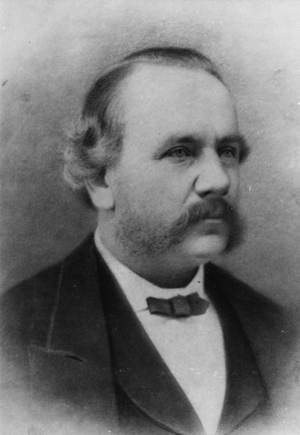C. F. Varley facts for kids
Quick facts for kids
Cromwell Fleetwood Varley
|
|
|---|---|
 |
|
| Born | 6 April 1828 |
| Died | 2 September 1883 (aged 55) |
| Occupation | Engineer, parapsychologist |
| Known for | Varley loop test Kelvin–Varley divider |
| Parent(s) | Cornelius Varley |
| Awards | FRS (1871) |
Cromwell Fleetwood Varley (born April 6, 1828 – died September 2, 1883) was a clever English engineer. He is best known for his work on the electric telegraph and the amazing transatlantic telegraph cable. He was also interested in parapsychology and spiritualism.
Contents
Varley's Family Life
Cromwell Fleetwood Varley was born in Kentish Town, London. He was the second of ten children in his family. His father, Cornelius Varley, was a scientist known for his research. He was also an active member of the Society of Arts, which is now called the Royal Society of Arts.
Cromwell's brothers, Samuel Alfred Varley and Frederick Henry Varley, were also inventors. They helped improve telegraph technology. The family believed they were related to famous historical figures like Oliver Cromwell. This is why Cromwell Fleetwood Varley had those names.
Becoming a Telegraph Engineer
In 1846, Varley joined a new company called the Electric Telegraph Company. By 1852, he became the chief engineer for the London area. Then, in 1861, he was in charge of engineering for the whole company.
Varley created many tools and methods to find problems in telegraph lines. He also found ways to make the telegraph work better. In 1870, he invented something called the cymaphen. This was a type of telegraph that could send speech!
The first transatlantic telegraph cable failed in 1858. This cable was supposed to connect Europe and America. Varley was asked to join a special committee to investigate why it failed. This committee was set up by the government and the Atlantic Telegraph Company.
The committee shared its findings in 1861. This led to a second cable being laid in 1865. Varley became the chief electrician for this new project. Even though there were many challenges, the second cable was a big success. Varley developed many new technologies for it.
Varley was also a smart businessman. He worked with Lord Kelvin and Fleeming Jenkin. Together, they used their inventions to make a lot of money from telegraphy.
Interest in Spiritualism
Cromwell Varley was interested in Spiritualism. This was a belief that people could communicate with spirits. He did investigations with another scientist, William Crookes. They used a special tool called a galvanometer to measure things during these experiments.
Ideas About Cathode Rays
In 1871, Varley wrote a scientific paper about cathode rays. He suggested that these rays were actually streams of tiny particles of electricity. Varley thought that these particles crashed into each other.
He believed this because the rays would bend when a magnet was nearby. This made him think the particles carried an electric charge. He also thought that an electric field should be able to bend these charged particles. However, he was never able to prove this part of his idea.
Later Life and Death
C.F. Varley passed away in 1883 at his home in Bexleyheath, Kent. He was 55 years old.
Honours and Achievements
Cromwell Fleetwood Varley received several important honours for his work:
- He became a member of the Institution of Civil Engineers in 1865.
- He was made a Fellow of the Royal Society in 1871.
- He was a founder member of the Society of Telegraph Engineers. This group later became the Institution of Electrical Engineers.
See also

